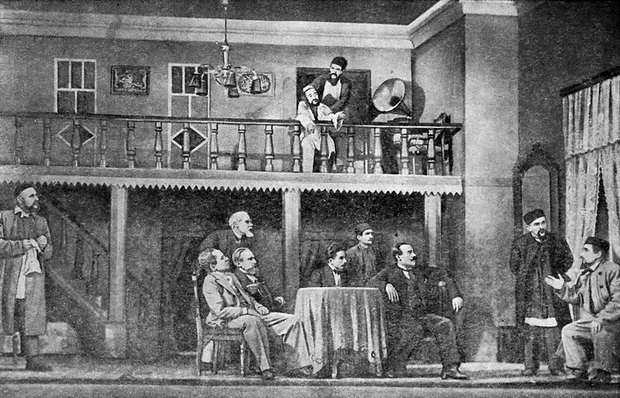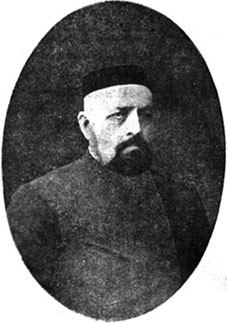Bankruptcies in pre-revolutionary Kazan: from one-day firms to the collapse of the ‘kings’
About how large entrepreneurs and bankers in Kazan were ruined in tsarist times
Today a large businessperson seems to be a successful person, and it would seem, he is in no danger, but tomorrow he can become the protagonist of the bankruptcy case. A vivid example is the case of 'the dairy king' Vagiz Mingazov. A hundred years ago juicy scandals also took place in Kazan: then there had been collapses of 'tea-and-glass kings' and of other influential people. About how the most famous Kazan bourgeois were ruined in tsarist times – in the column of a historian Radik Salikhov.
Ivory tower for bourgeois
Banking system in pre-revolutionary Kazan since its beginning was characterized by relative stability, due to generally favorable economic conditions that existed during the period of rapid development of capitalist relations.
The great reforms of Alexander II launched the process of liberation of business from administrative and class restrictions, contributed to a steady rise in industrial production, a variety of commercial activity that covered various strata of society.
However, it does not mean that the credit institutions of the city worked in perfect 'hothouse' atmosphere that allowed getting a guaranteed profit from a civilized cooperation with customers. In this area, there were very serious risks, due to constant and heavy 'competitive' struggle between banks and entrepreneurs, where each party tried to gain maximum benefits for themselves.

Companies-ephemera
The situation worsened by blatant economic ignorance or apparent financial grubbiness of beginning entrepreneurs, the number of whom was becoming more and more every year.
Many companies were created specially just to take a loan and then declare themselves insolvent. In the late nineteenth century, fictitious bankruptcies reached an epidemic character, because it was the easiest way of getting rich quick. Lax control by the banks led to the fact that loans were given under a collateral of non-existent or overvalued property that was used by cunning dealers. They deceived each other, creditors, partners, relatives in different ways, sometimes gaining a big jackpot, but more often they finished their journey in poverty or prison.
It is no coincidence that G. Kamal in his famous comedy 'Bankrupt' showed a generalized image of a merchant-speculator Sirazhetdin Tuktagaev who, having stolen the money from creditors, pretended to be insane and with the help of bribed doctor managed not only to avoid punishment but also to get a great amount of money. This play was wildly popular among small merchants and clerks who admired the smart tricks of a swindler.
Eye of discount and loan committee
But the reality, of course, was far from funny comedy. Banks improved and strengthened their security, the most qualified lawyers and economists started to work on them. The discount and loan committees started to play an important role in assessing the creditworthiness of a customer. The committees consisted of influential representatives of the merchants who, due to their professional activity, were aware of the state of affairs of one or another borrower. A sad plight awaited if there was a slight clue, any phoney 'bankrupt' or simply an entrepreneur who bit off more than he could chew.
So, in 1905, the bankrupt merchant belonging to the second guild Mukhametgali Sibiryakov lost all his property in payment of debt with interest to the Kazan branch of the State Bank. Two of his beautiful mansions, estimated at 22 000 rubles, were sold, and the owner, a yesterday successful businessperson, found himself on the street.
The collapse of 'the tea king'
Some contemporaries saw in the decision of the State Bank a political subtext, a kind of revenge for the protest activity of the merchant. Photo: Akhmetzyan Saidashev vk.me
The bankruptcy of one of the most known businesspersons of the city, bright public figure Akhmetzyan Saidashev, who was nicknamed as 'the tea king', 'Tatar Governor of Kazan' caused a wide public resonance. In 1894, he established the Trading and Industrial Association with an authorized capital at half a million rubles. Together with his partners he opened productions at two glass factories, bought from the landowner Zheltukhin in the Tsarevokokshaisk uyezd.
At the very beginning of his activity the manufacturer established close cooperation relations with almost all regions of European Russia, began producing glassware of high quality and diverse range of products, received several prestigious industry awards. But a year later, during a fair trade, the Kazan branch of the State Bank suddenly stopped the lending of the Association that has led to further competition management and the collapse of the gaining a good rate industrial production.
A number of his contemporaries saw in this decision of the State Bank a political subtext, a kind of revenge for the protest activity of the merchant, publicly defended the rights of the Muslim population. But, in fact, the lending institution revealed a fraud in securing of the loans and, being afraid of huge losses, decided to prevent adverse events.
Commercial failures and imminent bankruptcy did not spare anyone. In the funds of the judicial organizations of the Kazan province, stored in the National archives of RT, there were hundreds of cases, which tells about the personal tragedy of people who dedicated themselves to entrepreneurial activities. Among them was, for example, the former city head and successful fur merchant Yakob Sokolov, a man of great experience in the credit organizations but who suddenly lost his status and reputation.
Small rehearsal of future events
Banking house of Vasily Zusailov collapsed because of the disorder in the accounting, frauds, and securities crisis that erupted during the Russo-Japanese War. Photo: yaroslavova.ru
The banking system, of course, was under a lot of stress in times of war and social upheaval. It is enough to recall the bankrupt of a famous Kazan merchant, philanthropist, collector, Vasily Zausailov, whose Banking house collapsed because of the diorder in the accounting, frauds, as well as the securities crisis that erupted during the Russo-Japanese War.
During the revolutionary events of 1905 the banks of Kazan were literally stormed by hundreds of investors, angry from the rumors and fears about the falling rates and fearing for their savings. Panic was fueled by false and imaginary reports about terrorist acts, mass robberies of financial institutions.
Authorities introduced military security to all government agencies related to finance. Commercial banks hired by a private treaty lower ranks of the city police. All storages of material values were provided with expensive electrical alarm system. Cash workers and employees of the operating room of the Kazan branch of the State Bank were armed with revolvers Smith & Wesson. Of course, in such conditions, there was no question of any stability. Both customers and bankers were seized with panic.
However, all this was just a small rehearsal of future historical events that destroyed the old business world and transformed the credit system of the powerful state into the site of economic experiments of the young Soviet power.
Reference
Radik Rimovich Salikhov – a historian, Deputy Director on scientific work of Institute of History named after Şihabetdin Märcani of the Academy of Sciences of RT.
- Born in 1965.
- Doctor of Historical Sciences, head of Department of Modern and Contemporary History, Institute of History named after Şihabetdin Märcani of the Academy of Sciences of RT, a laureate of the State Award in Science and Technology of the Republic of Tatarstan in 2008, a corresponding member of the Academy of Sciences of the Republic of Tatarstan (2011).
- Salikhov made a significant contribution to the study of monuments of material and spiritual culture of the Tatar people, the social structure of Tatar society in the second half of XIX – early XX centuries, the influence of jadid transformations on Muslim community, problems of formation of national trade and industrial class, the economic history of the region, as well as historical and contemporary territorial Heraldry, the regional history of Tatarstan.
- Under his leadership and counselling, eight theses for a scientific degree of candidate of Historical Sciences were defended. He is the author of eight monographs and over 80 scientific articles.

